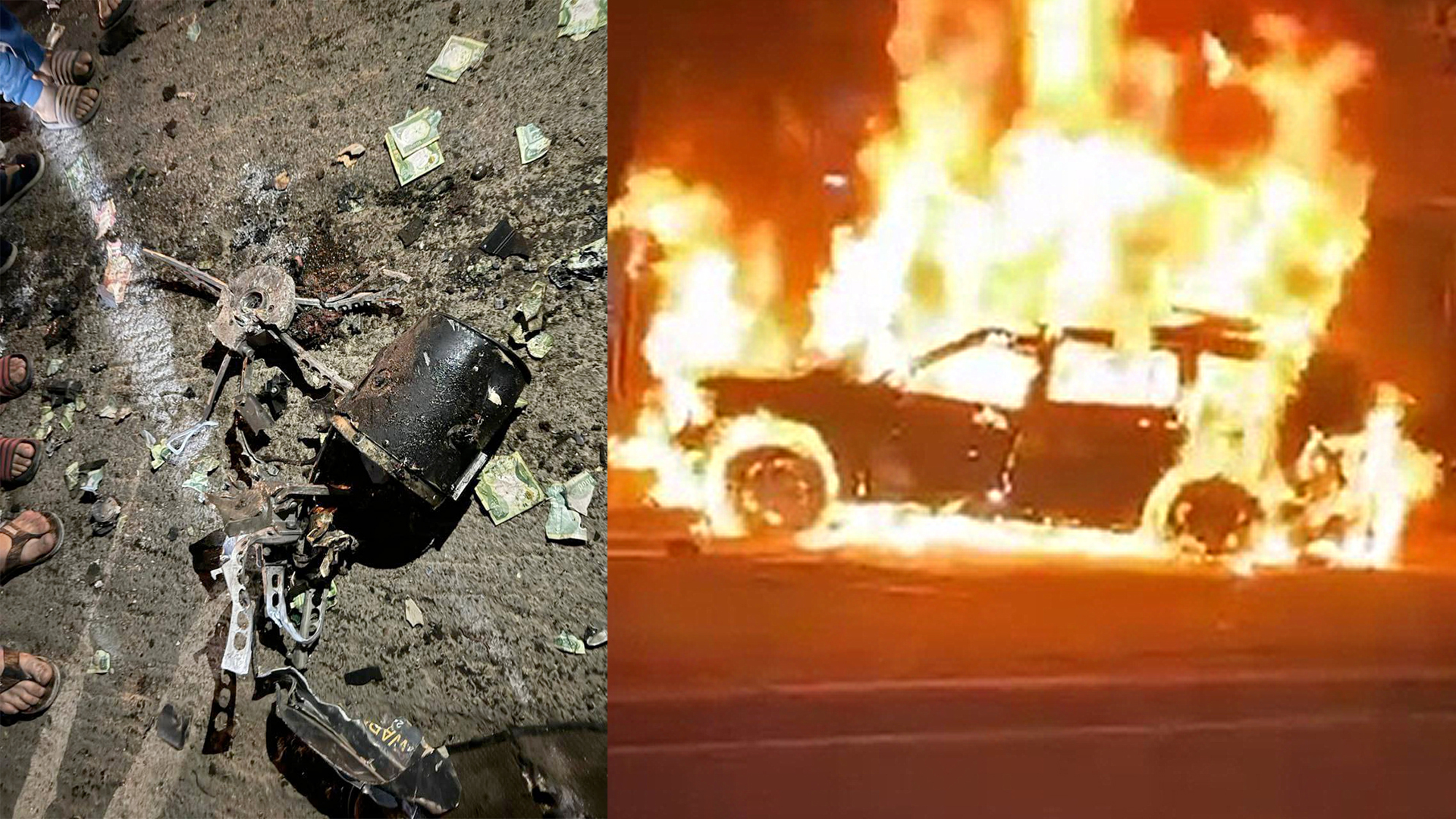Images emerging on social media in the aftermath of a U.S. drone strike in Baghdad indicate that a high-ranking member of the Iranian-backed Khataib Hezbollah militia was likely killed by a secretive AGM-114R9X Hellfire missile. The weapon, known colloquially as the “flying Ginsu,” is a variant of the standard Hellfire, but with six pop-out sword-like blades in lieu of a traditional explosive warhead.
The drone strike took place at 9:30 p.m. local time on Wednesday, when U.S. Central Command forces “conducted a unilateral strike in Iraq in response to the attacks on U.S. service members, killing a Kata’ib Hezbollah commander responsible for directly planning and participating in attacks on U.S. forces in the region,” CENTCOM stated. “There are no indications of collateral damage or civilian casualties at this time. The United States will continue to take necessary action to protect our people. We will not hesitate to hold responsible all those who threaten our forces’ safety.”
CENTCOM did not specify how the strike was carried out or with what kind of munition, but an image emerging on social media from the scene shows indications of the R9X’s use – the central hub of the weapon and blade-like rails with circular holes.
A former senior U.S. military official said the strike appeared to have used an RX9, NPR reported.
The weapon was designed for exactly these kinds of strikes, with the blades used to kill an occupant or occupants of the vehicle while minimizing collateral damage without the explosive warhead found on standard Hellfires.
As we’ve explained in the past, the AGM-114R9X – developed at some point during President Barack Obama’s two terms in office, according to The Wall Street Journal – continues to exist only behind a wall of secrecy that does not seem to apply to any other known Hellfire variant. The U.S. military has openly acknowledged the existence of at least four other known AGM-114R9 subvariants, the R9B, R9E, R9G, and R9H.
While past reporting on these weapons indicated that they were apparently fired from drones only used by U.S. military’s shadowy Joint Special Operations Command (JSOC) as well as the Central Intelligence Agency, the fact that CENTCOM publicized the attack may indicate a change in that policy. We’ve reached out to the command and will update this story if it provides additional details.
Publicly available information shows that the Air Force has been the service officially responsible for managing this variant since 2017. That is also the year of the weapon’s use, when one of the missiles killed Al Qaeda’s then-number two leader Abu Khayr al Masri while he was driving in Idlib. The War Zone Zone was first to highlight that he had likely died at the hands of a new type of exotic low-collateral damage munition.
The Flying Ginsu has been used only sporadically, as far as we can tell, since then.
As we previously reported, it was also likely used in the Aug. 2, 2022 CIA drone strike that killed al-Qaida leader Ayman al-Zawahri.
Given video and images of the burning vehicle struck, it is also possible that other munitions were used, or the R9X sparked the fire. At this point we just don’t know.

High Value Target
The drone strike killed Abu Baqir al-Saadi, the leader of Khataib Hezbollah, according to the Hezbollah-affiliated Al Mayadeen Telegram.
The group is part of an umbrella organization of Iranian-backed militias that the Biden administration blames for the Jan. 28 drone strike on Tower 22 in Jordan that killed Sgt. William Jerome Rivers, Spc. Kennedy Ladon Sanders and Spc. Breonna Alexsondria Moffett, and wounded more than 40 others.

In the wake of that attack the U.S. vowed to retaliate and did so Feb. 2, dropping more than 125 munitions on more than 85 targets in Iraq and Syria. Those strikes were led by two B-1B Lancer bombers flying directly from Dyess Air Force Base.
In a press conference after the U.S. retaliation operation, White House National Security Council spokesman John Kirby said there would be more strikes against militia leaders.
“They’re not going to end tonight,” he said at the time. “So there will be additional responses. There will be additional actions that we will take all designed to put an end to these attacks and to take away capability by the IRGC.”
In addition to the three soldiers killed, there have been at least 143 U.S. troops injured during attacks in Iraq and Syria by Iranian-backed militias since Oct. 18, according to the Pentagon.
Air Force Maj. Gen. Pat Ryder, the Pentagon’s top spokesman, answered no on Monday when asked if these retaliatory strikes are a long-term effort. However, today’s strike in Baghdad indicates that they are continuing as promised.
Meanwhile, Iraq’s Popular Mobilization Front – a largely Shia group of militias subsumed into the Iraqi security system – has vowed revenge for today’s deadly strike in Baghdad.
Khataib Hezbollah, which announced on Jan. 30 that it would pause attacks on U.S. forces, is apparently gearing up to resume them now.
The Biden administration has repeatedly stated it is not looking to expand the latest conflict in the Middle East that began when Hamas attacked Israel on Oct. 7 and has been fanned by anger over massive Israeli bombardment of Gaza in response.
While this latest strike matches the Biden administration’s assertion that operations against Iranian-backed groups that attack U.S. troops in the region will continue, it remains to be seen what type of response will now come from those groups.
Contact the author: howard@thewarzone.com
